Reposted by: Luke Sibieta

by Luke Sibieta
We see relative declines at age 11 between 2013 and 2018, with not much change afterwards
We then see some small catch-up for most needs at age 16 from 2013 onwards. Note that the severe learning difficulties group is small and VERY heterogenous.
by Luke Sibieta
This could include a long-term specialist workforce plan, much better training for teachers on SEND needs, better partnerships with special schools and real accountability for outcomes [3/3]
ifs.org.uk/articles/eng...
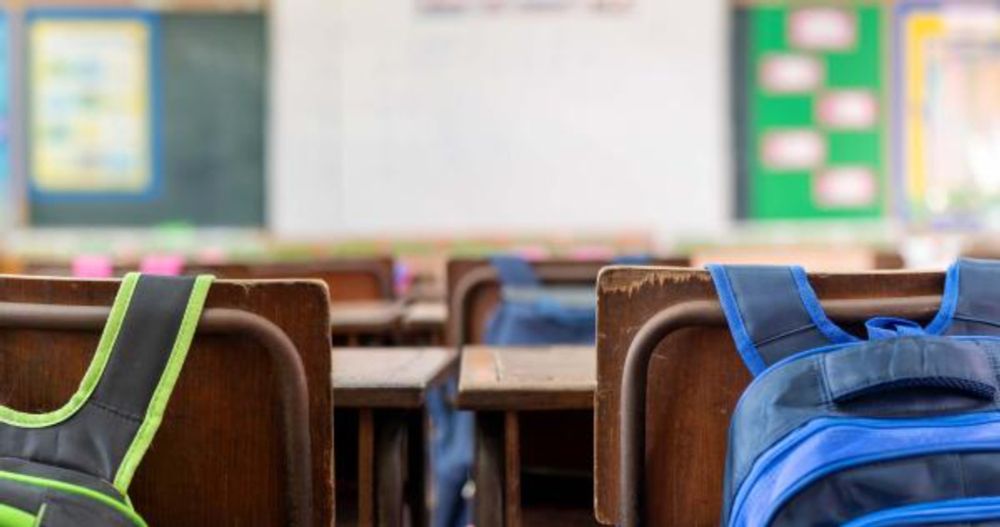
by Luke Sibieta
The key question for government is whether it can deliver a smaller rise AND improve quality
We've written how the current EHCP-led funding model doesn't provide incentives to improve quality and can actively prevent it [2/3]
by Luke Sibieta
This is about £600m higher than previous forecasts quoted by the NAO
If delivered, current fiscal plans then imply real-terms cuts to mainstream school spending per pupil [1/3]

by Luke Sibieta
There are probably big differences within types of needs too, illustrating the diversity of need and challenge in providing support [6/6]


by Luke Sibieta
If this turns into more young adults on out of work benefits, this could generate big labour market and fiscal risks [5/6]

by Luke Sibieta
Many areas of London have high EHCP rates, but average CDLA claims
Some areas are really high on both measures (Knowsley: 7% with EHCPs, 16% on CDLA) [4/6]

by Luke Sibieta

by Luke Sibieta

by Luke Sibieta — Reposted by: Christina Pagel
I wanted to delve deeper into some of the key findings....[1/6]
Reposted by: Luke Sibieta, Christina Pagel
THREAD on @eduinlatimer.bsky.social, @lukesibieta.bsky.social and Darcey Snape's IFS Green Budget chapter, funded by @nuffieldfoundation.org:

by Luke Sibieta
The case for removing this popular and rigorous option always seemed quite weak to me
qualifications.wales/news-views/f...
by Luke Sibieta
Spending is going to go up, the question is how to spend the money in ways that actually improve the system.

by Luke Sibieta

by Luke Sibieta

by Luke Sibieta

by Luke Sibieta
The net result is high cost and patchy quality [3/6]

by Luke Sibieta
The question is how best to respond [2/6]
by Luke Sibieta
ifs.org.uk/articles/eng...
by Luke Sibieta
Reposted by: Luke Sibieta
If you’d like your own copy to play with, they’re now £10 and that INCLUDES postage 😮
Bit.ly/educationbattle
Reposted by: Luke Sibieta
schoolsweek.co.uk/labours-brea...

Reposted by: Luke Sibieta
She completed Barkley Marathons with 99 seconds to spare
- 33 Parkruns distance
- in a forest
- mostly off trail
- partially in dark
- no GPS watch
- ascended 2x height of Everest
- only 19 male runners have completed it in 29 years
- Jasmin was the 1st woman

Reposted by: Luke Sibieta
Our new report, funded by @nuffieldfoundation.org, shows how recent big funding increases haven’t been sufficient to cover rising need, and why the system needs urgent change:
[THREAD: 1/9]

Reposted by: Luke Sibieta
- Autistic spectrum disorder
- Speech, language, and communication needs
- Social, emotional and mental health needs
There is evidence that other high-income countries are seeing similar trends.
[3/9]
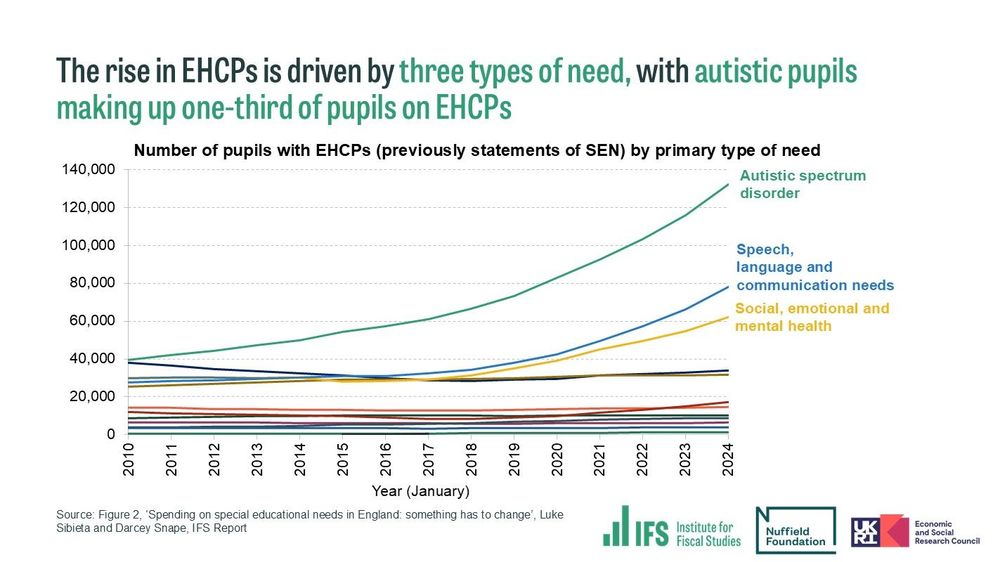
Reposted by: Luke Sibieta
The obligations attached to EHCPs mean that in reality, spending has been £200-800 million higher than funding per year since 2018.
[4/9]
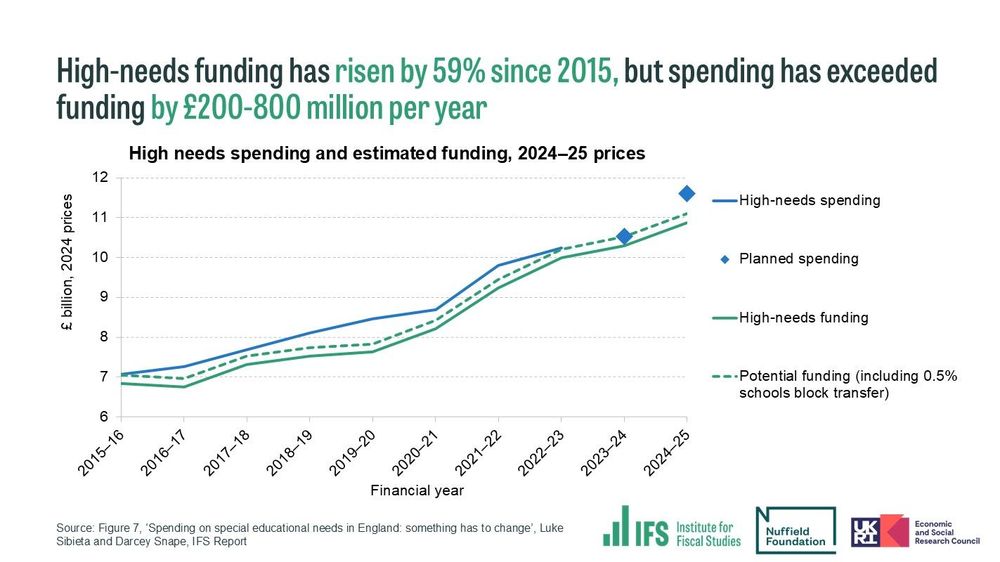
Reposted by: Luke Sibieta
This is despite independent special schools only containing about 5% of all pupils with EHCPs.
[6/9]
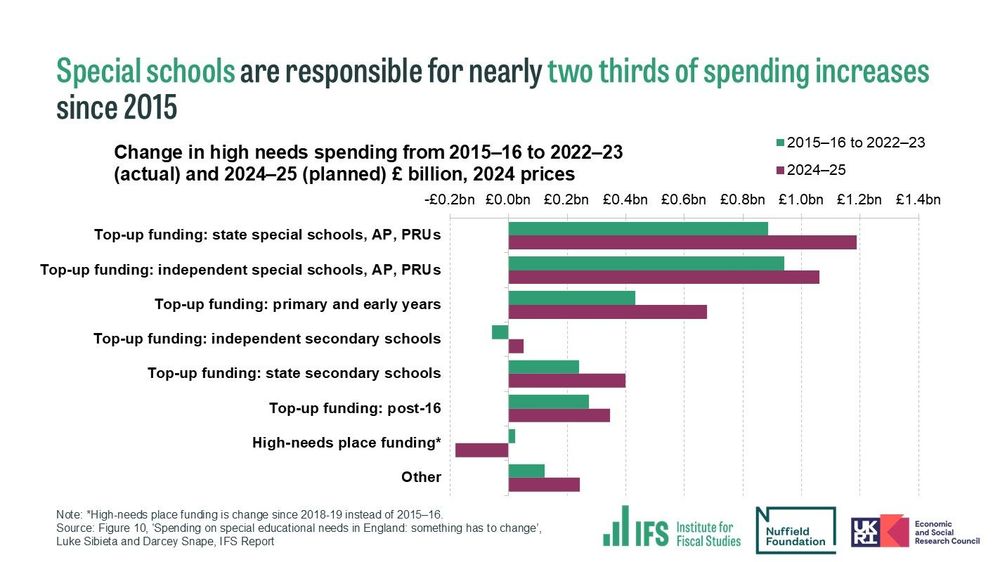
Reposted by: Luke Sibieta
Even with an additional £1 billion in the 2024 Autumn Budget, rapid rises in forecast spending could push these deficits out to over £8 billion by 2027.
[7/9]
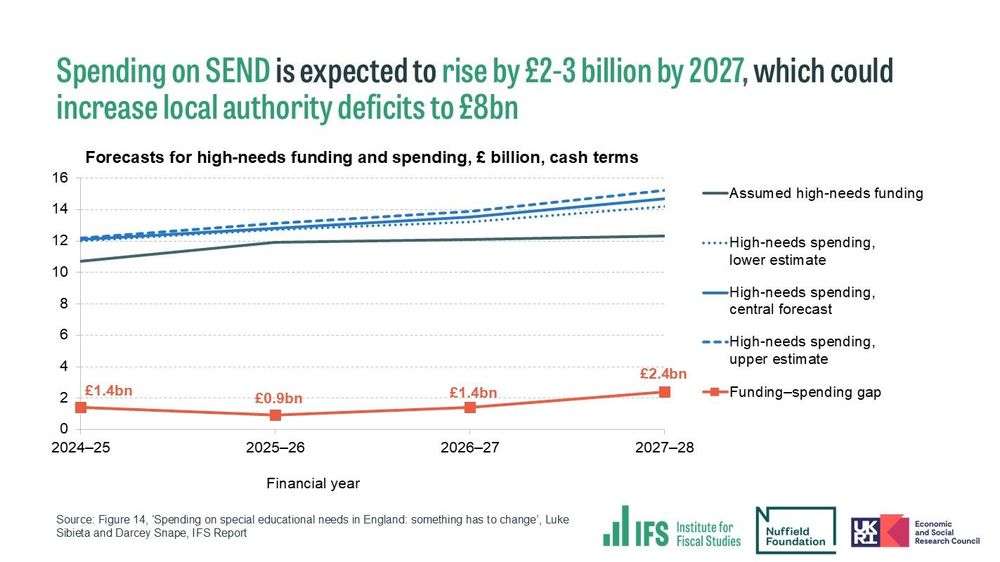
Reposted by: Luke Sibieta
📊 Use our new tool to compare how special educational needs prevalence, funding, and spending differ across local authorities, and changes over time: https://ifs.org.uk/calculators/how-do-special-educational-needs-vary-across-areas